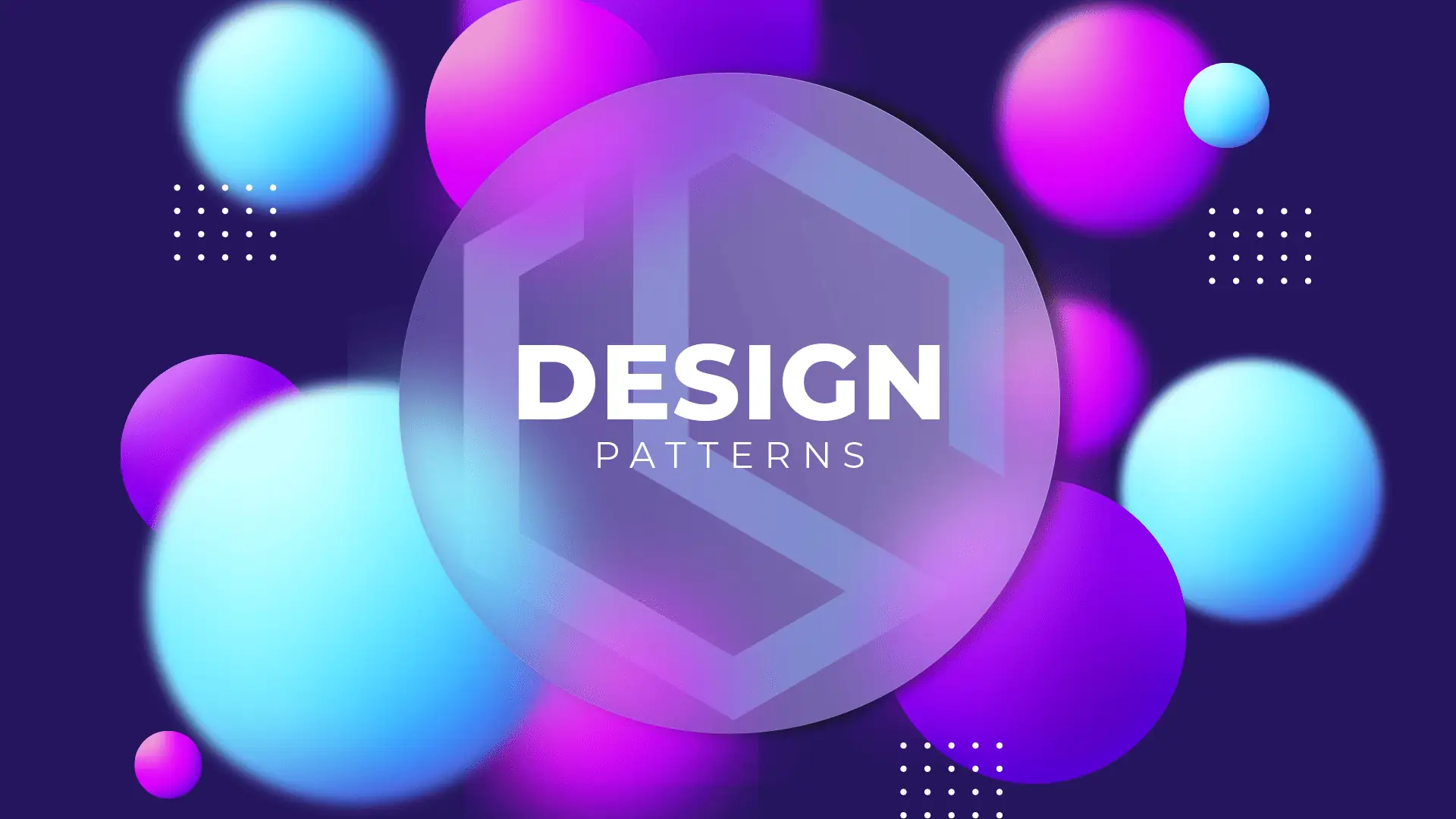Software engineering employs design patterns, which are widely applicable solutions to recurring software design problems. Design patterns do not constitute final designs that can be readily translated into code. Rather, they offer a blueprint or model for addressing a problem that can be adapted to diverse scenarios.
Introduction
Software design patterns are an essential aspect of software development that helps developers and engineers create reusable and scalable code. These patterns provide solutions to commonly occurring problems in software design, enabling developers to solve these problems efficiently and effectively.
In essence, a software design pattern is a general solution to a recurring problem in software design that has been proven to be effective. It's like a blueprint for a specific type of problem that developers can use to create software systems that are reliable, maintainable, and scalable.
Software design patterns have been around for a long time and are widely used in the software development industry. They are considered to be a best practice in software design because they provide a standardized approach to solving common problems, making it easier for developers to communicate and collaborate with one another.
In this blog, we will explore what software design patterns are, the different types of software design patterns, and the benefits of using them in software development. We will also discuss best practices for using software design patterns to help you get started on your journey toward becoming a more efficient and effective software developer/engineer.
Types of Software Design Patterns
There are three main types of software design patterns: creational patterns, structural patterns, and behavioral patterns. Each type of pattern addresses a different aspect of software design and solves a unique set of problems. Let's take a closer look at each type of pattern:
- Creational Patterns - These patterns deal with object creation and provide a way to create objects without specifying their exact class. Examples of creational patterns include the Singleton pattern, the Factory pattern, and the Builder pattern.
- Structural Patterns - These patterns deal with object composition and provide a way to create relationships between objects. Examples of structural patterns include the Adapter pattern, the Facade pattern, and the Decorator pattern.
- Behavioral Patterns - These patterns deal with object interaction and provide a way to manage communication between objects. Examples of behavioral patterns include the Observer pattern, the Command pattern, and the Template method pattern.
Each type of pattern is essential in its own right and can be used to solve specific problems in software design. It's important to understand the differences between each type of pattern and when to use them in your projects to make your code more efficient and effective. In the next sections of this blog, we'll explore each type of pattern in more detail and provide examples of how they can be used.
Creational Patterns
Creational patterns are concerned with object creation and provide a way to create objects without specifying their exact class. These patterns provide flexibility and scalability in object creation and are useful when the exact type of object needed is not known at runtime.
- Singleton Pattern - This pattern ensures that a class has only one instance and provides a global point of access to it. This is useful when there should only be one instance of a class in the entire system, such as a database connection or a configuration object.
- Factory Pattern - This pattern provides an interface for creating objects, but allows subclasses to decide which class to instantiate. This is useful when there are multiple possible classes that could be instantiated based on a given input, such as different types of databases.
- Builder Pattern - This pattern separates the construction of an object from its representation and allows the same construction process to create different representations. This is useful when there are multiple ways to create an object, such as creating a complex object with many optional components.
By using creational patterns, developers can create objects in a flexible and scalable way, without tying themselves to a specific class or construction process. This can make their code more modular and easier to maintain over time.
Structural Patterns
Structural patterns deal with object composition and provide a way to create relationships between objects. These patterns are useful when there is a need to change the structure of an object without changing its functionality.
- Adapter Pattern - This pattern allows two incompatible interfaces to work together by creating a bridge between them. This is useful when there is a need to use an existing class with an incompatible interface, such as using a legacy library in a new system.
- Facade Pattern - This pattern provides a simplified interface to a complex system, making it easier to use. This is useful when there is a need to provide a simpler interface to a complex subsystem, such as a user interface for a complex library.
- Decorator Pattern - This pattern adds behavior to an object dynamically, without changing its original class. This is useful when there is a need to add functionality to an object in a flexible and modular way, such as adding logging or caching to a method.
By using structural patterns, developers can create complex systems that are easy to use and maintain. These patterns allow for flexibility and modularity in object composition, making it easier to change the structure of an object without affecting its functionality.
Behavioral Patterns
Behavioral patterns deal with object interaction and provide a way to manage communication between objects. These patterns are useful when there is a need to manage complex relationships between objects and ensure that they communicate effectively.
- Observer Pattern - This pattern defines a one-to-many relationship between objects so that when one object changes state, all of its dependents are notified and updated automatically. This is useful when there is a need to maintain consistency between related objects, such as in a user interface.
- Command Pattern - This pattern encapsulates a request as an object, allowing it to be passed as a parameter and manipulated as needed. This is useful when there is a need to decouple the requester of a command from the object that performs it, such as in a menu system.
- Template Method Pattern - This pattern defines the skeleton of an algorithm in a base class, allowing subclasses to override specific steps of the algorithm as needed. This is useful when there is a need to define a common algorithm for a group of related objects while allowing for flexibility in how each object behaves.
By using behavioral patterns, developers can create complex systems that are easy to understand and maintain. These patterns allow for effective communication between objects and provide flexibility in how they behave, making it easier to manage complex relationships and ensure consistency between related objects.
Benefits of Using Software Design Patterns
Using software design patterns can bring many benefits to software development. Here are some of the key benefits of using software design patterns.
- Reusability - Software design patterns provide a proven solution to common problems, making it easier to reuse code across different projects and systems. This can save time and effort in development, as well as improve the quality of the code by using tried-and-tested solutions.
- Scalability - Software design patterns provide a flexible and modular approach to software development, making it easier to scale up or down as needed. This can be particularly useful in large or complex systems, where changes to one part of the system can have a ripple effect on other parts.
- Maintainability - Software design patterns can make code easier to maintain over time, as they provide a clear and structured approach to software development. This can make it easier to identify and fix bugs, as well as add new features or functionality to the system.
- Collaboration - Software design patterns provide a common language and framework for developers to work with, making it easier to collaborate and share knowledge across different teams or projects. This can improve communication and productivity, as well as reduce the risk of errors or inconsistencies in the code.
- Best practices - Software design patterns embody best practices in software development, such as encapsulation, abstraction, and separation of concerns. By using these patterns, developers can ensure that their code is more maintainable, scalable, and robust, as well as easier to understand and debug.
Overall, using software design patterns can improve the quality, scalability, and maintainability of software development projects, as well as promote best practices and collaboration across different teams and projects.
Best Practices for Using Software Design Patterns
While software design patterns can bring many benefits to software development, it is important to use them correctly and effectively. Here are some best practices for using software design patterns:
- Understand the problem - Before using a software design pattern, it is important to fully understand the problem you are trying to solve. Make sure you are using the right pattern for the job, and that you are not over-engineering or under-engineering the solution.
- Use patterns sparingly - While software design patterns can be useful, it is important not to use them excessively. Using too many patterns can make code harder to understand and maintain, and can lead to unnecessary complexity.
- Follow conventions - When using software design patterns, it is important to follow established conventions and naming conventions. This can make it easier for other developers to understand and use your code.
- Use well-known patterns - While it may be tempting to create your own custom patterns, it is usually better to use well-known and established patterns. This can make your code more predictable and easier to understand for other developers.
- Test your code - When using software design patterns, it is important to test your code thoroughly to ensure that it is working correctly. This can help you identify and fix bugs early on and can ensure that your code is robust and reliable.
By following these best practices, developers can ensure that they are using software design patterns effectively and efficiently while minimizing complexity and ensuring maintainability.
Summary
Design patterns are a valuable tool for software developers/engineers, providing a proven approach to solving common problems in software development. By using software design patterns, developers can improve the quality, scalability, and maintainability of their code, while promoting best practices and collaboration across different teams and projects.
There are many different types of software design patterns, including creational patterns, structural patterns, and behavioral patterns, each with its own strengths and weaknesses. By understanding these patterns and using them appropriately, developers can create complex systems that are easy to understand, maintain, and scale. However, it is important to use software design patterns sparingly and follow established conventions and best practices. By doing so, developers can ensure that their code is predictable, easy to understand, and reliable while minimizing complexity and ensuring maintainability.
In short, software design patterns are a powerful tool for software developers/engineers but must be used wisely and appropriately to achieve the best results. ✌️

